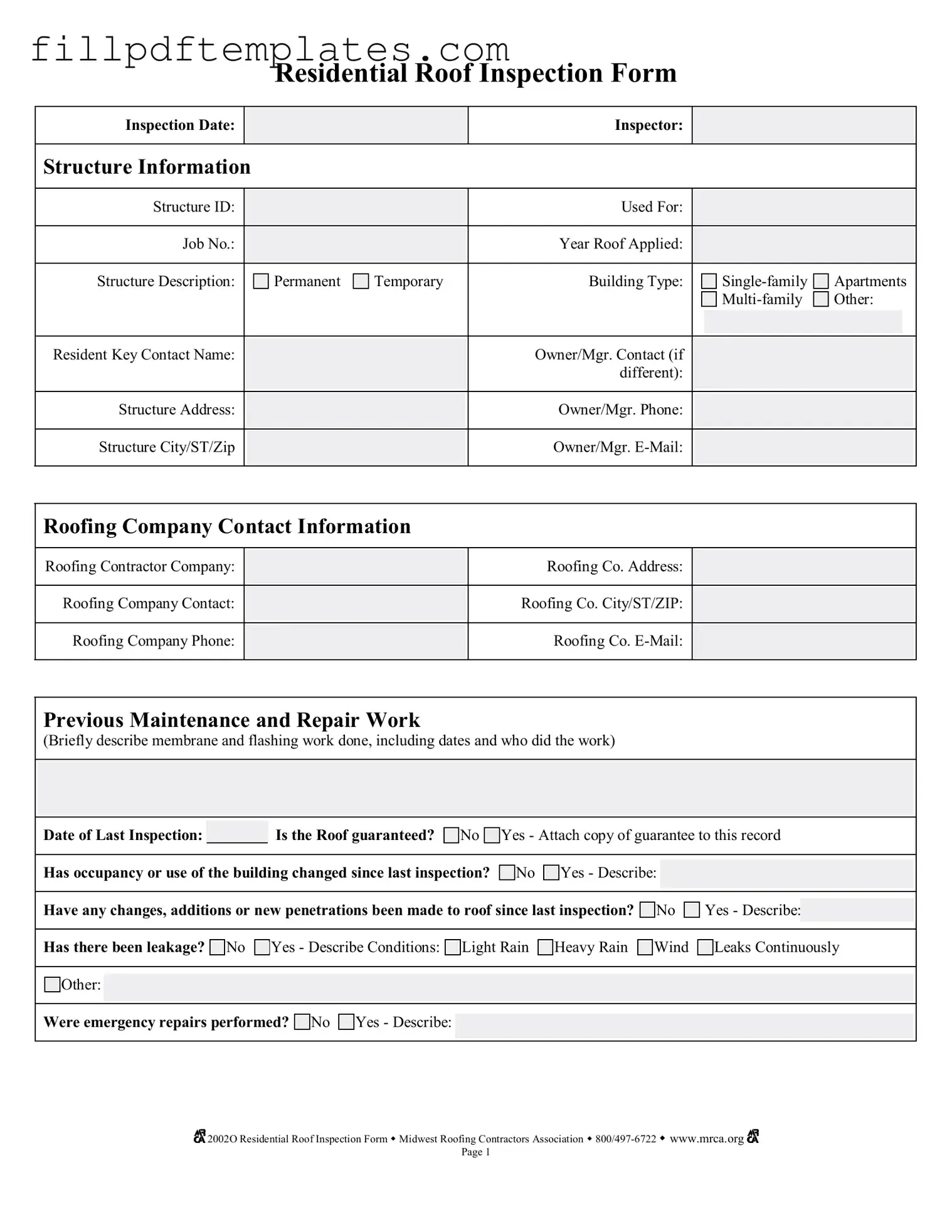The Roof Inspection Form serves as a vital tool for assessing the condition of residential roofs, ensuring their longevity and safety. This comprehensive document captures essential details, starting with the inspection date and the inspector's name, followed by specific structure information such as the structure ID, its intended use, and the year the roof was applied. It allows for a thorough description of the building type, whether it is a single-family home, an apartment, or a multi-family dwelling. Contact information for the owner or manager, along with the roofing company, is also included, facilitating communication and follow-up. The form prompts inspectors to note previous maintenance and repair work, which is crucial for understanding the roof's history. Additionally, it addresses any changes in occupancy or use since the last inspection, as well as modifications made to the roof. Inspectors must document any leakage incidents and the conditions under which they occurred, alongside any emergency repairs that were performed. The form employs a straightforward coding system to evaluate various components of the roof, such as the interior roof deck, exterior walls, and drainage systems. Each section requires the inspector to indicate the condition—good, fair, or poor—along with recommended actions. This systematic approach not only aids in identifying immediate concerns but also helps in planning future maintenance to prolong the roof's lifespan.


 2002O Residential Roof Inspection Form w Midwest Roofing Contractors Association w
2002O Residential Roof Inspection Form w Midwest Roofing Contractors Association w 

 2002O Residential Roof Inspection Form w Midwest Roofing Contractors Association w
2002O Residential Roof Inspection Form w Midwest Roofing Contractors Association w 

 2002O Residential Roof Inspection Form w Midwest Roofing Contractors Association w
2002O Residential Roof Inspection Form w Midwest Roofing Contractors Association w 

 2002O Residential Roof Inspection Form w Midwest Roofing Contractors Association w
2002O Residential Roof Inspection Form w Midwest Roofing Contractors Association w 

 2002O Residential Roof Inspection Form w Midwest Roofing Contractors Association w
2002O Residential Roof Inspection Form w Midwest Roofing Contractors Association w 